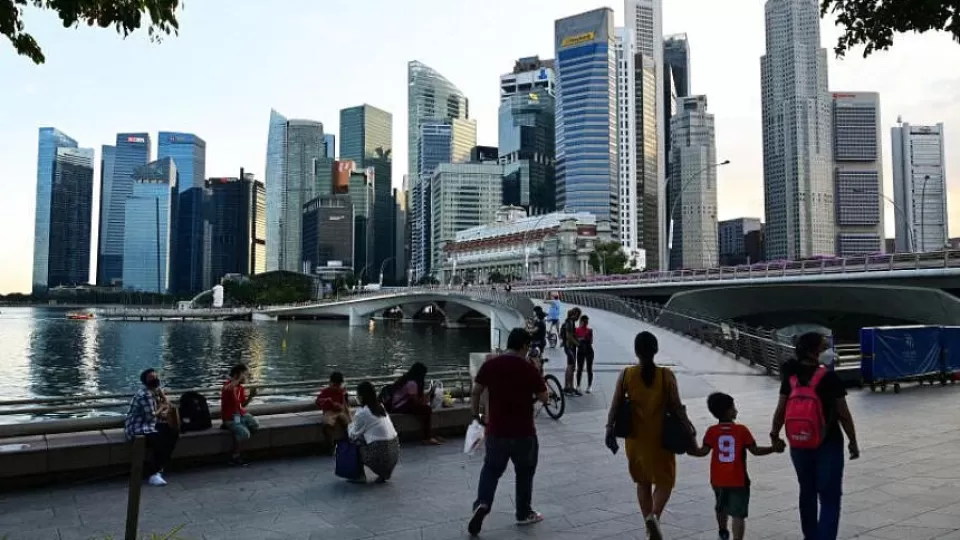February 14, 2023
SINGAPORE – The Singapore economy grew slightly slower than expected in 2022, and has entered this year with muted expectations as a global slowdown looms.
The overall growth for 2022 was 3.6 per cent, a tad below the earlier estimate of 3.8 per cent, said the Ministry of Trade and Industry (MTI) on Monday.
While the faster-than-expected relaxation of China’s border restrictions is likely to help aviation- and tourism-related sectors, a broader slowdown in the global economy will limit the pace of expansion.
For now, MTI is keeping its growth forecast for 2023 within a broad range of 0.5 per cent to 2.5 per cent.
In the fourth quarter of 2022, the economy expanded by 2.1 per cent from a year ago, lower than MTI’s earlier projection of 2.2 per cent and the 2.3 per cent forecast by analysts in a Bloomberg poll.
On a quarter-on-quarter seasonally adjusted basis, the economy grew just 0.1 per cent in the fourth quarter.
However, MTI raised its estimate for 2021 growth to 8.9 per cent from 7.6 per cent to account for data updates and revisions from various sources, including the annual sectoral surveys carried out last year.
While gross domestic product (GDP) growth in 2022 was mainly driven by the wholesale trade, manufacturing and other services, this year will see different drivers.
The opening of global air travel will mean that the air transport and aerospace segment could do well. Domestic-oriented sectors such as accommodation, entertainment and recreation could also contribute more.
“Since the last media briefing in November, Singapore’s external demand outlook for 2023 has improved slightly,” said Mr Gabriel Lim, Permanent Secretary for Trade and Industry.
“In particular, growth in China is projected to pick up in tandem with the faster-than-expected easing of its Covid-19 restrictions,” he said.
China’s full economic reopening has, in turn, led to improvements in the growth outlook of Asian economies.
However, the outlook for the United States and euro zone economies remains weak amid tighter financial conditions, Mr Lim added.
“At the same time, uncertainties in the global economy remain,” he said.
These include the impact of higher interest rates, as well as the risk that the war in Ukraine and geopolitical tensions among major global powers will escalate.
Hence, MTI said, the growth outlook for other outward-oriented sectors remains weak.
For instance, the semiconductors segment of the electronics cluster is expected to be hit by weaker global semiconductor demand, while the precision engineering cluster is projected to be weighed down by a cutback in capital spending by semiconductor manufacturers.
At the same time, growth in the wholesale trade, water transport, and finance and insurance sectors will be dampened by the slowdown in major external economies.
Barclays senior regional economist Brian Tan said that despite the mixed picture, the bank is relatively more optimistic than the MTI.
“While we expect manufacturing activity to remain weak into this year, the services sector recovery, driven by the revival in international travel, will likely provide a significant offset,” he said.
Barclays maintained its 2023 GDP growth forecast of 2.2 per cent – well above the 1.5 per cent midpoint of MTI’s forecast range.
In 2022, the manufacturing sector grew by 2.5 per cent, slower than the 13.3 per cent growth in 2021. Within the sector, all clusters expanded, except for the chemicals and biomedical manufacturing clusters.
The construction sector posted a growth of 6.7 per cent, down from the 20.5 per cent expansion in 2021 amid both public-sector and private-sector construction works.
The services-producing industries expanded by 4.8 per cent, easing from the 7.6 per cent expansion in 2021. Growth was mainly driven by the wholesale trade, other services, and information and communications sectors.
Separately, on Monday, Enterprise Singapore said non-oil domestic exports (Nodx) rose by just 3 per cent in 2022, sharply down from the 12.1 per cent gain in 2021. It also maintained its 2023 forecast for Nodx of no growth or a contraction of as much as 2 per cent.
As the growth momentum slows, inflation is no longer accelerating.
Headline inflation, which includes price changes in all items, rose to 6.6 per cent year on year in the fourth quarter, after peaking at 7.3 per cent in the third quarter, according to the Economic Survey of Singapore 2022 report.
On a quarter-on-quarter seasonally adjusted basis, headline inflation came in at 0.9 per cent, down from the 1.8 per cent in the third quarter.
Mr Edward Robinson, deputy managing director of economic policy and chief economist at the Monetary Authority of Singapore (MAS), said at Monday’s briefing that MAS’ current policy stance is appropriate and will continue to slow the inflation momentum.
“The recent out-turns on inflation and growth have come somewhat closer in line with our expectations, and MAS’ next policy review accordingly is scheduled for April 2023,” he said.
MAS maintains that for 2023 as a whole, factoring in the goods and services tax increase, headline inflation will average 5.5 per cent to 6.5 per cent.


